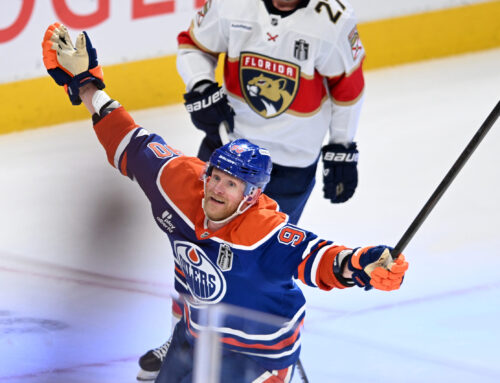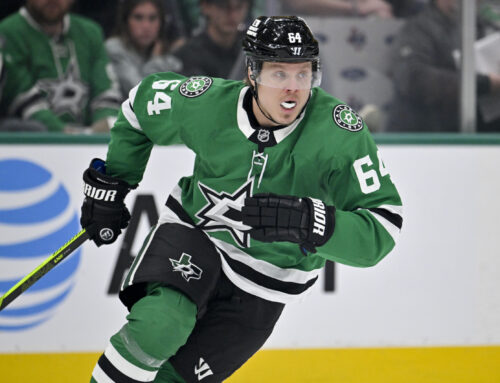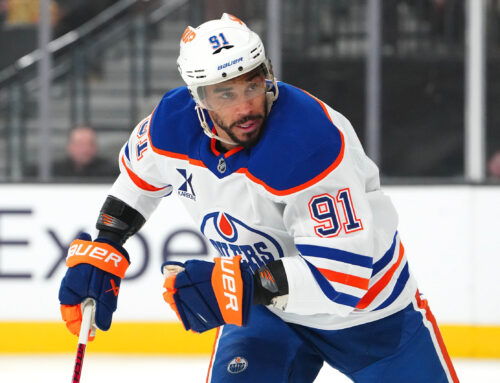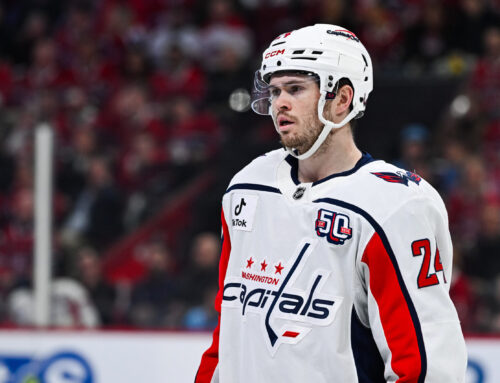Last week, I mentioned that looking at a player's inflated shooting percentage is a good first step to figuring out what players could regress. The inverse is also true. Deflated shooting percentages could be a sign of what players could rebound next season.
After all, a player taking 200 shots with a shooting percentage of 10 per cent will score 20 goals. If that same player's shooting percentage drops to five per cent, that's 10 goals.
Of course, shooting percentage is not the only statistic to consider for potential rebounds, but it's a good starting point. Players with lower shooting percentages in 2018-19 included Tyler Toffoli, J.T. Miller and Jaden Schwartz, all of whom rebounded this year for various reasons.
For the list, we're looking at players who are down from a career or long-time average, and not someone who dropped from a crazy-high shooting percentage in 2018-19. Viktor Arvidsson, for example, dropped from 17.4 shooting percentage to 11.8 per cent. However, the latter number is in line with his career average, and the 17.4 per cent is a huge outlier.
10. William Karlsson
It's tough to say whether Karlsson's 10.9 shooting percentage this year is normal for him, or if this is a deflated shooting percentage. For now, we're going to assume it's deflation. He had a shot 7.7 per cent in Columbus and Anaheim, but busted out in his first season in Vegas, when he scored 43 goals on 23.4 per cent shooting. Last season, that dropped to 14.2 per cent. This year, he's at 10.9 per cent. One thing about Karlsson is that he doesn't shoot the puck enough (just over two shots a game), so fantasy general managers can't be happy about a low shooting percentage.
It still seems strange to me that a rebuilding Detroit team decided to trade away a 25-year-old, 30-goal scorer, but here we are. He had a shooting percentage of 13.1 per cent coming into the season, and shot 13.9 per cent a season ago when he potted those 30 goals. Injuries limited him to 55 games this year likely played a role in a disappointing season, but he also took a bit step backwards in both shots and shooting percentage. His shot almost a half a shot less per game than last year, and his 8.5 shooting percentage led to only 11 goals.
Backstrom has never been known for scoring, but going into this season, you could trust him for 20-plus goals. After all, he shot at least 11.2 per cent in each of the previous five years and averaged 13.4 per cent in that time. That's why this year's 9.1 per cent was a bit of a surprise. He doesn't shoot the puck often, but he had hit his average, he would have scored 18 goals instead of 12 (which is an 82-game pace of 24 goals instead of 16).
7. Matt Duchene
We all knew Duchene was going to have a big letdown this season, so you shouldn't have been disappointed with his 52-point pace. However, his goal total is another issue. He's normally good to bulge the twine 20 to 30 times a year, so this year's 13 goals (a 16-goal pace) is out of line for him. Part of that has to do with a 9.6 shooting percentage, a career low and the first time he's finished below 10 per cent. Last year's 18 per cent was unsustainable, but he averaged 14.7 per cent in his previous four years. Another issue is his shot total. This year, he averaged 2.06 shots per game, almost half a shot less than his career average.
6. Yanni Gourde
Gourde's drop in shooting percentage (and goals, points, plus/minus, etc.) can be attributed to a drop in both ice time and the quality of linemates. Two years ago, he put up 25 goals and 64 points as a rookie. He averaged 16:09 per night to go along with 1:52 of power-play time while playing frequently with Brayden Point and Alex Killorn. Last year, he scored 22 goals and 48 points, but averaged 15:50 per night and 1:25 of power-play time while playing with Killorn and Steven Stamkos. This year, he was down to 10 goals and 30 points, averaging only 14:04 per night with 42 seconds of power-play time while playing with Cedric Paquette and Pat Maroon. So obviously his shooting percentage over those three years dropped from 18.4 per cent to 16.9 per cent to 9.1 per cent. Don't expect too much of a rebound if that usage continues.
5. Mark Stone
It may seem strange to have Stone on this list, as he didn't put up a disappointing season. He normally scores 20 goals and this year had 21 when the season was suspended. His 0.97 points-per-game was the second-highest of his career. However, he came into this season averaging 15.8 per cent shooting and had a career high of 16.6 per cent a year ago. This season, that dropped to 12.5 per cent.
4. Brock Boeser
The Canucks forward went through a noticeable shooting percentage decrease for the second year in a row. In his first full season in 2017-18, he shot 16.2 per cent. That dropped to 12.4 per cent last year, and then further to 9.5 per cent this season. After scoring 10 goals in his first 23 games of the season (with a 14.3 shooting percentage), he scored only six in his next 34 games (with a 6.1 shooting percentage) and he was goalless in his last 12 games. It didn't help that he was removed from the top line.
3. Taylor Hall
It's fair to say that Hall's season didn't turn out as great as many expected. He averaged a shooting percentage of 10.6 per cent in Edmonton and bumped that up to 11.1 per cent in New Jersey going into this year. However, combined with the Devils and Coyotes this year, that shooting percentage dropped all the down to 6.9 per cent. Only Boone Jenner and Derek Stepan had a lower shooting percentage while scoring at least 10 goals. Bump Hall's shooting percentage up to 11.1 per cent this season, and he's looking at 26 goals instead of 16. That would also have put him close to a point-per-game, which would have been seen as more of a success.
2. Tyler Seguin
Seguin had scored only 17 goals this year and was on pace for 20 goals, a let-down for any fantasy general manager who owned him. After all, the last time he failed to scored 20 goals was in the lockout-shortened season in 2012-13. In the six seasons since then, he's averaged 34 goals on 11.3 per cent shooting. This year, that shooting percentage dropped to 6.9 per cent. If he had been at 11.3 per cent this year, we're looking at 28 goals and a pace of 33.
We covered DeBrincat a couple of weeks ago about the most disappointing young players of 2019-20 as many were expecting at least 30 goals (but hopeful for another 40-goal season). In his first two seasons, he averaged a shooting percentage of 17.2 per cent (and had 18.6 per cent last year), but that plummeted to 8.7 per cent shooting this season. That goes a long way to explaining why he had only 18 goals when the season was suspended. If he shot five percentage points higher (which would still be the lowest of his career), he would have netted 28 goals and been on pace for 33.





 EDM
EDM FLA
FLA MIN
MIN NYR
NYR DAL
DAL L.A
L.A BUF
BUF CBJ
CBJ DET
DET VAN
VAN T.B
T.B
